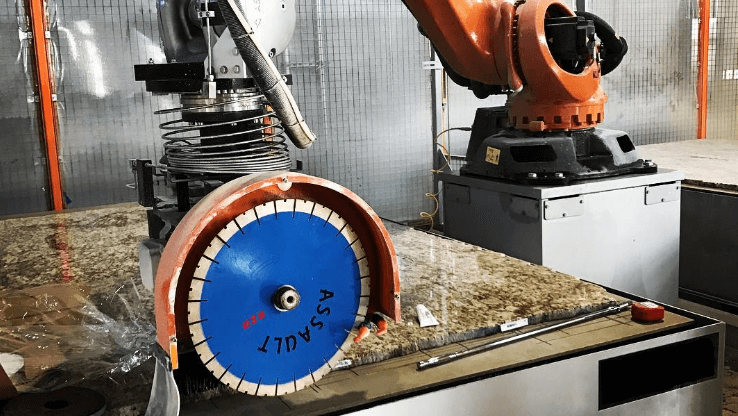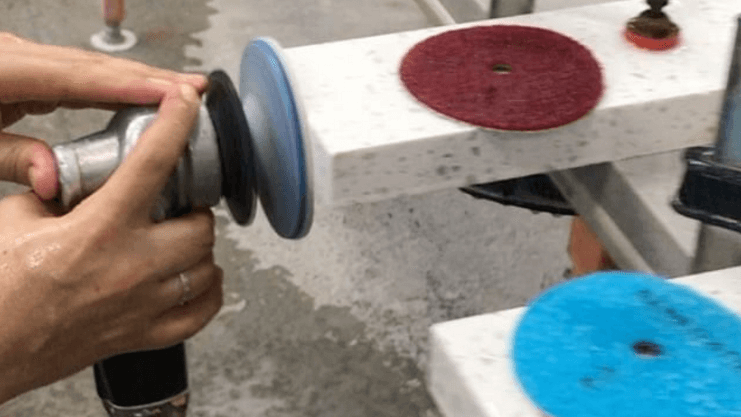
Ways to Increase Your Profit Margin (Part 2)
Hopefully you have found some success by implementing our profit-building ideas from our last post. If not, take some time this morning and figure out a plan to start making more money. In this post, we are going to talk about 1 really easy way to improve profits that you can do this afternoon and start seeing the benefits by tomorrow!
Make Sure All Your Remnants Have Prices!!!
Most shops we work with don’t put prices on the remnants in their slab yards. Clients browse the slab yard and the sales people end up give them a rock bottom steal-of-a-deal, unbeknownst to the owner. One shop we work with does price each remnant and it has worked well for them. The sales person assigned with the task of pricing the remnants was annoyed he had to do every single remnant; and his frustration manifest itself through higher remnant prices. Then a weird thing happened. They were able to sell the remnants at those higher prices. Prices that they normally wouldn’t have asked for when it was just the customer and them talking in the slab yard. We think the customer felt better because they thought the listed prices were set and that everyone coming to the slab yard got the same deal as everyone else. We have found that other shops, have the owners do the pricing to make sure their salespeople aren’t giving away the farm every time they take a customer to the remnant yard.
Stock Sinks In Your Inventory
Choosing to warehouse a stockpile of your most popular sinks can be a decision some of the shop owners we work with don’t like to make. On the one hand space is usually at a premium with our customers and on the other there’s the possibility of being left with a bunch of sinks no one wants to buy. These are both valid concerns, but it is hard to argue with the savings you get when you buy in bulk. Buying a single sink for a customer can cost you upwards of $300 for a single purchase, but buying a pallet of sinks can often bring that cost down to under $140 or so. Obviously you don’t want to do this with very decorative or wild sinks that have sporadic demand, but for your run of the mill stainless steel 50/50 bowl that you’re putting in 300 kitchens a year it can make sense to buy in bulk. Imported sinks are available by many suppliers. These sinks are not brand-name type, and the quality of this sinks may not be equal to those of high-end name brands, but often customers choose these sinks after we show them the difference between the two because they want to save money. Sink accessories are also available, including little grate and strainers that goes in the bottom of the sink.
Don’t Give Your Money Away!
Remember not to fall into the trap that money-losing owners often do. Just because you are paying less for the sinks, doesn’t mean you should charge less for them! While you are saving a ton of money on each sink, you still have costs that go with holding that inventory. Another big mistake poor owners make is telling their salespeople that their costs have gone down, and then the salespeople are all too eager to pass “all those savings on to the customer.” This doesn’t land you more business, it just takes money out of your pocket.
So, do yourself a favor and put those extra dollars in your pocket.
Read Part 3

Ways to Increase Your Profit Margin (Part 1)
You work hard for your money and nothing is more anger inducing than seeing the profits from that hard work lost to waste or unnecessary costs. Here are some ideas that some fabrication shops implemented to increase the revenue that stays in their pocket.
Slab Inventory
Having an inventory of slabs on site is essential to quick fabrication and job turn around. Everyone knows this, but it is a very expensive to warehouse stone that may go unsold for months or years if you make the wrong choice. So having all the slabs you want on hand, without going bankrupt, can be a bit tricky and problematic, but accomplishing this on a limited budget can be done. We’ve seen shops get some inventory without breaking the budget and this is how they did it. They will coax or persuade their supplier into selling them a bundle of slabs at a better price, and after doing it a few times, they would asked the supplier if they could wait until the slabs were sold so they can make the payment. Once a relationship has been established, they would ask for bundles of slabs that the supplier would want to “get rid of” and they setup a deal where they showed the supplier’s slabs to their customers and would pay the supplier for the slab after they had sold and fabricated the job. This is generally known as “Consignment”. This way, the fabrication shop was able to have an inventory of slabs they could quickly turn around using the suppliers slabs on a consignment basis. This scenario was a “win-win” for them and the supplier, but not all suppliers are willing to work out a deal like this with just any fabrication shop. Relationships are key in business and this situation was the result of a long standing trust between the two. Still, it can be an option that can increase your profits by not wasting money on slabs you don’t end up using. This is also convenient for the customer who doesn’t have to make an extra trip to the supplier. They can do the slab picking right from your inventory.
Start Selling Cutting Boards
Customers end up asking for a lot of extras on the typical countertop job and one of those things is cutting boards. Most shops hear this request after the job is sold and the customer is working their magic to get as much as they possibly can. It’s understandable, a kitchen is a big investment, and most shops usually say “Sure thing, why not? We can make it for you free of charge”. The thing is, that fabrication takes time, both machine time and usually hand water polishing and finishing time. So while the customer is very happy, the fabricator takes another hit. We’ve seen some shops start to get ahead of these customer requests by adding an option on their sales quotes for cutting boards adding a $80 charge for a 12”x12” cutting board. Over 80% of the clients agreed to this “upsale”. We don’t fully understand the appeal of a 50lb 3cm granite cutting board, but people seem to love to order them. The bottom line is the customer is happy and the fabricator didn’t have to give away any more free labor.
Laminating Edges Kills Profits!!
For years 2cm stone was the only thickness available; and that meant stacking a lamination to get a 4cm edge. Over the past 10 years or so, the industry has seen a switch to predominantly 3cm jobs and 2cm jobs that don’t require lamination. Some fab shops had trouble adjusting, but those with foresight were relieved. Most 3cm jobs don’t require laminations and this saves time and money. To fabricate a 4cm lamination requires another pass on the saw to cut out the lamination piece, labor to glue up and clamp the lamination, time for the glue to set, and time to water polish the edge. Stop doing this! Embrace 3cm slabs and stop wasting time on laminations. Now, some customers want custom 3cm stacks and that is fine because you charge them custom edge prices. Most often they are a double stack to 6cm (though we have seen a 9cm bullnose that turned out gorgeous) and when you do have a customer that wants this, happily charge them for it and put the shop to work. The point here is to stop doing the extra work of 2cm laminations and not being able to charge a premium for the work. For normal kitchens and vanities offer 3cm edges and when the odd custom job comes that wanted stacked 3cm edges, charge for the extra labor. Stop doing 2cm laminations.
In our next post, we will cover more money saving and making tips to help you keep more of your hard-earned money in the bank.
Read Part 2


